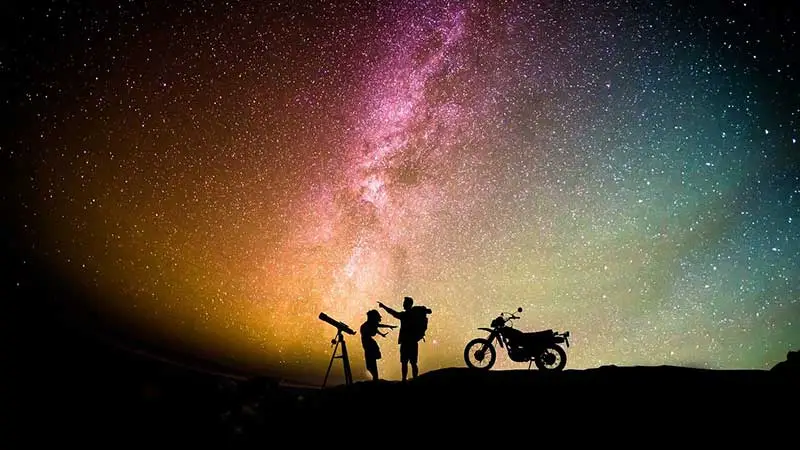Table of Contents

NASA Solar System Ambassador,
Astronomical League Master of Outreach,
Cruise ship speaker on Astronomy & space science,
Amateur astronomer and photographer for 50 years
The Orion Nebula
Without a doubt the most beautiful nebula in the northern sky is the Great Nebula in Orion. Located 1500LY away, it’s a favorite for stargazers and a common target for amateur astronomers from October to March.
You may know your way around a telescope, and think you know all about it. But in the heart of the nebula there is much more going on than meets the eye.
Where is the Trapezium?

Find the familiar Orion constellation and look below the belt. Under dark skies, 2 or three stars, including a fuzzy cloud, should be visible. The fuzzy cloud is the Orion nebula, and inside it, the Trapezium.
The Trapezium

Discovered by Galileo, the Trapezium is a tight grouping of stars in the center of the nebula. Responsible for much of the illumination of the nebula, the Trapezium appears at first glance to be 4 stars in the shape of a lopsided rectangle.
These visible stars are in fact just in front of a huge nebula that is teeming with over 2000 newborn stars.
Meet the Trapezium

The brightest stars are labeled A-D, in order of right ascension. The brightest is Theta Orionis (C) at magnitude 5.1. A and B are eclipsing binaries, varying in brightness about 2.4x. This is a phenomenon easily detectable with an amateur telescope.
These hot stars produce so much high energy light, they ionize the surrounding hydrogen gas creating the visible Orion nebula. Theta Orionis is an O-type star, 251,000x brighter than our Sun, and one of the hottest stars in existence.
Look for 6 stars
A casual glance reveals 4 bright stars in a little box. When viewed at magnifications > 125x, telescopes of 5” or more aperture under good seeing conditions may resolve two additional 11th magnitude stars (E and F), for a total of six stars.
Larger instruments can pull in G and H under ideal conditions. I often use the challenge of spotting E and F with my TEC140 refractor as a test of seeing conditions.
It is a very young cluster of stars, only 300,000 years old. The dinosaurs never saw the Trapezium.
These stars are huge! The five brightest ones are 15-30x the mass of our Sun. And, they are all within 1.5 light years of each other. Can you imagine how bright they must appear from a point within the cluster?
Given that the lifespan of a star is inversely proportional to its mass, you can quickly calculate these 5 brightest stars each have less than a three million year lifespan. Soon, relatively speaking, they will each erupt into spectacular supernova explosions.
Our descendants will be able to see them in the daytime for a few months. Then in the years that follow spectacular new nebulae will be created. Perhaps by then we’ll have FTL travel figured out and can have a ringside seat!
Hidden Black Hole
Current research suggests there may be a hidden intermediate sized black hole with a mass of ~200 Suns here. This would explain the high velocity dispersion of stars within the cluster.
So a few months from now, when you next point your telescope at the Orion nebula, pause for a moment to consider the amazing Trapezium. Given the age of the Earth and the size of the Milky Way, we are lucky to be here at the just the right time to enjoy it!
References
- Cover Image (The Orion Nebula): Credit: Opo Terser. Licensed under the Creative Commons Attribution 2.0 Generic license. https://commons.wikimedia.org/wiki/File:The_Great_Orion_Nebula_(M42).jpg
- Trapezium, the center of the Orion Nebula. Credit: ESO/M.McCaughrean et al.
- Trapezium. Credit: Mark Johnston






All information is perfect, fantastic and incredivle when you see that.